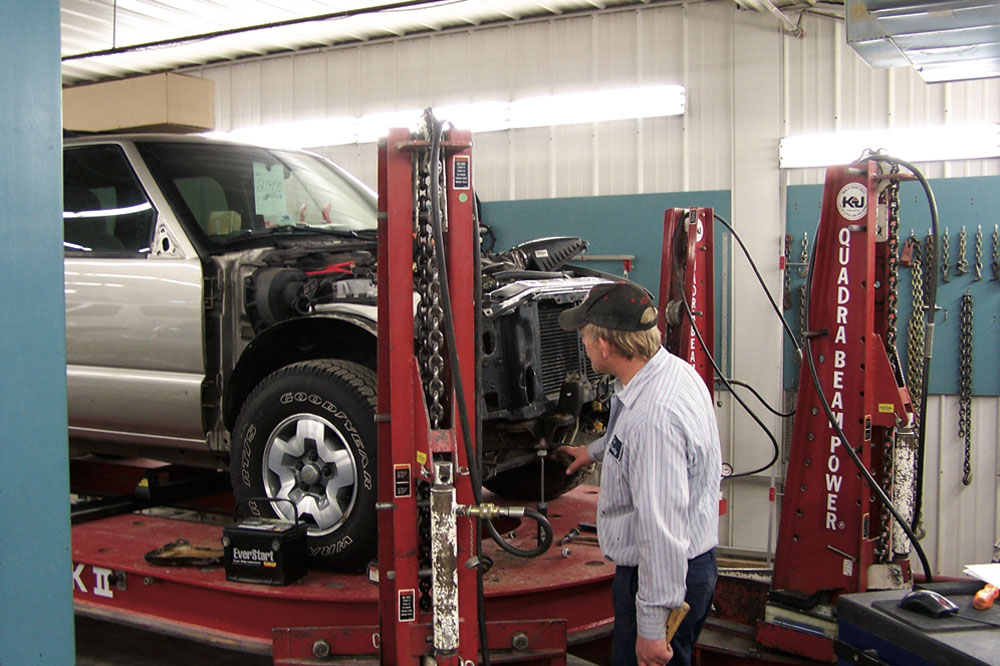
It’s not something most people think of until a car is in an accident, so there are a lot of misconceptions about how repairs are handled. Here are 7 facts that will clear up confusion about collision repair, from how your car is assessed to where it can be taken.
1. There is More To Collision Damage Than You Know
A car’s impact with an obstacle causes damage to the body, frame, wheels, interior pieces, and drivetrain components.
In the event of a minor collision, even the position of the suspension can be impacted and this is why Fairway Collision Center offers wheel alignment.
2. Shop Estimates Can Vary Because of the Skill of the Appraiser
The final repair cost can be very close when the estimate is given by a skilled appraiser. Get someone who is not proficient in assessing damage, and the estimate would likely be considerably lower but it would not cover everything that needs to be done to fix the car.
Some repairs aren’t apparent until work has begun. That’s where the appraiser’s skills come into play: they have to convince the insurance company there was a reason the damage was overlooked the first time, and additional repairs are now necessary to make the car roadworthy.
3. “Totaling” a Car Depends on More than the Severity of the Damage
Insurance companies consider the car a total loss if the repair cost of the vehicle exceeds the value of the vehicle. A new car has to be irreparable to be considered totaled, but an older car with high repair costs and little value can fall into this category, rapidly.
4. Metal Body Parts Don’t Have a “Memory”
It may have appeared in television commercials and videos that a body panel can be reassembled after being bent, with a special tool or some household items. However, the body panels are bend for good, whether they are bent in the factory or impact. Body technicians in the body shop must carefully bend and reshape metal back to its original shape to remove dents from a panel.
5. A Lack of Body Filler Doesn’t Mean a Lack of Repairs
In the old days, if you wanted to find out if a car had been in a wreck, you would rub a magnet over it to see which parts were still metal and which parts were covered in body filler to hide dents. Some vehicles come from the factory with filler to hide minor inconsistencies after the metal is shaped.
Advances in body repair techniques and tools allow metal to be reshaped to remove virtually any dent, reducing the need to use fillers to make a repair. Automotive paint can flex with body panels to a certain extent before it separates or breaks. The damage may have been so small that the paint is still bonding that dents may be easily removed without requiring repainting the panel. While this is unlikely at the point of impact, surrounding metal could be fixed without new paint, thus making it impossible to identify the repair afterward.
6. With a Quality Repair, a Wrecked Vehicle Can Be As Good As New
When repairs on vehicles are handled correctly, they have the same function, structural integrity and appearance as if they had never been involved in a collision. Manufacturers work directly with body shops and through associations such as I-CAR to ensure technicians can bring vehicles back to their original specifications.
7. You Can Choose Your Body Shop
Your insurance provider may suggest a shop to take your vehicle to, but you don’t have to take it there for the repair to be paid.
Fairway Collision Center is ASE certified, and our shop is I-CAR Gold Class certified, which means our staff has the experience and training to fix your car correctly the first time. An appraiser is on staff to evaluate your car and get the work approved by your insurance company so that you can get back on the road as soon as possible!

